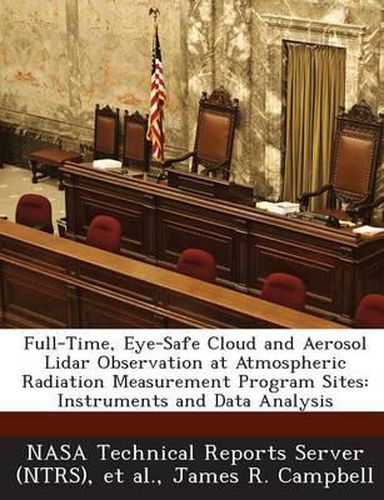Readings Newsletter
Become a Readings Member to make your shopping experience even easier.
Sign in or sign up for free!
You’re not far away from qualifying for FREE standard shipping within Australia
You’ve qualified for FREE standard shipping within Australia
The cart is loading…






Atmospheric radiative forcing, surface radiation budget, and top of the atmosphere radiance interpretation involves a knowledge of the vertical height structure of overlying cloud and aerosol layers. During the last decade, the U.S. Department of Energy through I the Atmospheric Radiation Measurement (ARM) program has constructed four long- term atmospheric observing sites in strategic climate regimes (north central Oklahoma, In Barrow. Alaska, and Nauru and Manus Islands in the tropical western Pacific). Micro Pulse Lidar (MPL) systems provide continuous, autonomous observation of all significant atmospheric cloud and aerosol at each of the central ARM facilities. Systems are compact and transmitted pulses are eye-safe. Eye-safety is achieved by expanding relatively low-powered outgoing Pulse energy through a shared, coaxial transmit/receive telescope. ARM NIPL system specifications, and specific unit optical designs are discussed. Data normalization and calibration techniques are presented. A multiple cloud boundary detection algorithm is also described. These techniques in tandem represent an operational value added processing package used to produce normalized data products for Cloud and aerosol research and the historical ARM data archive.
$9.00 standard shipping within Australia
FREE standard shipping within Australia for orders over $100.00
Express & International shipping calculated at checkout
Atmospheric radiative forcing, surface radiation budget, and top of the atmosphere radiance interpretation involves a knowledge of the vertical height structure of overlying cloud and aerosol layers. During the last decade, the U.S. Department of Energy through I the Atmospheric Radiation Measurement (ARM) program has constructed four long- term atmospheric observing sites in strategic climate regimes (north central Oklahoma, In Barrow. Alaska, and Nauru and Manus Islands in the tropical western Pacific). Micro Pulse Lidar (MPL) systems provide continuous, autonomous observation of all significant atmospheric cloud and aerosol at each of the central ARM facilities. Systems are compact and transmitted pulses are eye-safe. Eye-safety is achieved by expanding relatively low-powered outgoing Pulse energy through a shared, coaxial transmit/receive telescope. ARM NIPL system specifications, and specific unit optical designs are discussed. Data normalization and calibration techniques are presented. A multiple cloud boundary detection algorithm is also described. These techniques in tandem represent an operational value added processing package used to produce normalized data products for Cloud and aerosol research and the historical ARM data archive.